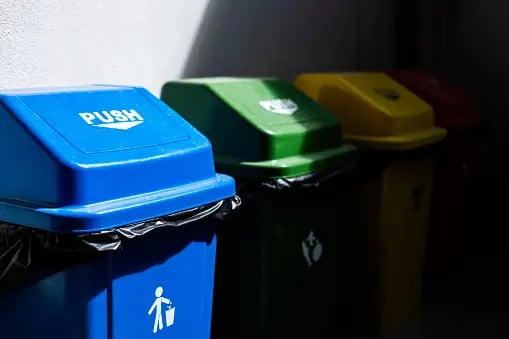GHG Protocol basics: Scope 1, 2, and 3 emissions reporting
Understanding the basics of greenhouse gas emissions reporting will set your organisation up for success in your emissions reduction efforts.
Any plan to limit the effects of climate change requires an accurate assessment of greenhouse gas (GHG) emissions.
Recognising this need, a group of non-profits and business organisations came together in 2001 to create the Greenhouse Gas Protocol. Now the foremost authority on the subject, the group regularly releases standardised frameworks for measuring GHG emissions. These standards have in turn been adopted by more comprehensive standards, such as CDP.
The terms Scope 1, Scope 2, and Scope 3 refer to specific categories of emissions laid out in the GHG Protocol standards.
In this article, we’ll dig into the basics of the GHG Protocol, explain the different scopes, and discuss how organisations can use these standards in their reporting and net zero efforts.
What are Scope 1, 2, and 3 emissions?
Scope 1, Scope 2, and Scope 3 are categories of emissions defined by the GHG Protocol. These scopes are used by businesses, governments, and other organisations to report on their GHG emissions, as well as by regulators and NGOs to set targets for reducing carbon and other greenhouse gases.
The scopes are differentiated by how much control an organisation has over the sources of emissions.
 GHG Inventory Diagram. Source: Greenhouse Gas Protocol
GHG Inventory Diagram. Source: Greenhouse Gas Protocol
What are Scope 1 emissions?
Scope 1 GHG emissions are also called “direct” emissions. This scope encompasses emissions owned or controlled by the organisation. That means the organisation is directly involved in the action which releases the greenhouse gases, such as owning vehicles or facilities that combust fossil fuels.
Examples of Scope 1 emissions
- Emissions from combustion of fuel in a furnace or boiler
- Emissions from combustion of fuel in company vehicles
What are Scope 2 emissions?
Scope 2 GHG emissions are emissions generated from the purchase of electricity consumed by the organisation. These emissions are “indirect,” meaning the release of GHGs is physically occurring off-site on behalf of the organisation in question.
Examples of Scope 2 emissions:
- Emissions from the power plant to supply electricity to a building
- Emissions from the power plant to supply electricity used to charge electric vehicles
What are Scope 3 emissions?
The largest source of emissions for most organisations are Scope 3, which refers to indirect GHG emissions that are a consequence of the organisation’s activities, but which the organisation does not have direct control over. These are sometimes referred to as “value chain” emissions.
Examples of Scope 3 emissions:
- Emissions from the extraction of raw materials used in manufacturing
- Emissions from the manufacturing of products used by the organisation
- Emissions from the downstream usage of products or services
- Emissions from waste disposal
- Emissions from business travel
Reporting on Scope 1, 2, and 3 emissions
Reporting on Scopes 1, 2, and 3 involves collecting data about GHG output from various sources and compiling it according to the standards of the GHG Protocol or an equivalent international standard.
According to the GHG Protocol, reporting on Scopes 1 and 2 is mandatory. These emissions are the easiest to collect data on, since they come from sources owned or directly influenced by the reporting organisation.
Scope 3 reporting is optional, but strongly encouraged. For many organisations, Scope 3 emissions will account for about 70% of total GHG footprint. At Rio, we encourage organisations to report on Scope 3 to gain a complete understanding of their impact on climate change and to better support their likelihood of hitting net zero targets. While it is true that scope 3 reporting is difficult when compared to Scopes 1 and 2, it’s also potentially the most important.
Our customers find that conducting comprehensive (aka “full-scope”) GHG reporting provides benefits that go beyond fulfilling requirements, including:
- Increased trust between the organisation, employees, and customers
- Identification of weaknesses and cost centres in the value chain
- Identification of opportunities to reduce energy costs
Reporting on emissions using a sustainability framework
Most organisations that report on GHG emissions do so using a recognised sustainability reporting framework. These frameworks help standardise reporting, provide guidelines for data collection, and enable greater transparency.
There are many sustainability frameworks out there, and selecting the right one for your organisation can be difficult. We put together this frameworks guide to help you choose.
Your guide to sustainability reporting frameworks
What about Scope 4 emissions?
You may have heard about an additional emissions category known as Scope 4. This is not an official category within the GHG Protocol and it is not mandated by any existing frameworks.
However, Scope 4 has been the focus of increased attention as organisations look to quantify the positive impact of their products or services that avoid GHG emissions.
Unlike the first three scopes, which refer to emissions produced as a result of an organisation’s actions, Scope 4 refers to avoided emissions. The most common example is emissions avoided by offering remote work (thereby reducing emissions from commuting and business travel). However, this is not to say that other emissions associated with working from home should be ignored entirely — organisations should still measure such emissions to gain an accurate overview of their footprint.
Learn more: What Is Scope 4? Reporting Avoided CO2 Emissions & More.
What’s next?
Understanding the basics of the GHG protocol and the different emissions scopes will help you as you begin reporting on your organisation’s emissions. Once you’ve established regular, comprehensive reporting, you can begin working towards your net zero targets and tracking progress over time.
Tracking and reporting on emissions is challenging. Rio’s intelligent sustainability software makes it simpler, automatically sorting emissions into Scopes 1, 2, and 3 using industry-standard guidance provided by the GHG Protocol.
Learn more about GHG reporting using Rio
We dig into the basics of the GHG Protocol, explain the different scopes, and discuss how organisations can use these standards in their reporting.









